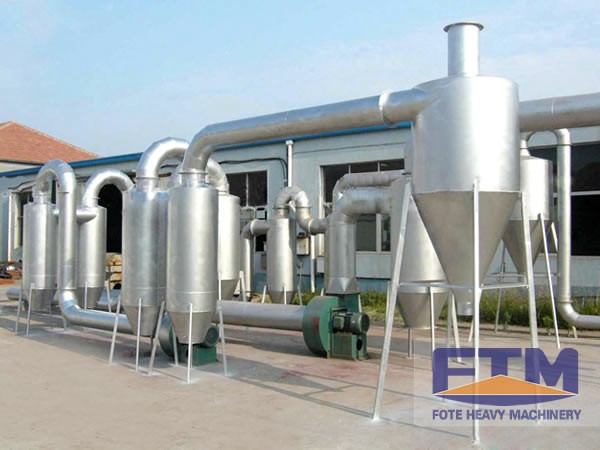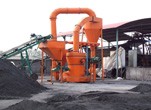Energy conservation and environmental protection is the requirement for market development, and the customers require the wood sawdust dryer energy-saving as well. Customers complain that the equipment's heat loss is too great. To achieve the ideal state of operation, what needs to do firstly for drying equipment manufacturers is to find the factors of heat loss. So what on earth causes the heat loss of wood sawdust dryers?

When the inlet airflow at a speed of 16 m/s, heat loss is about 1582 w. When the inlet airflow flow speeds up, the material residence time will decrease and the materials moisture content in outlet will increase. Under this case, the heat used in drying lessens and the heat lost increases. Improving the inlet airflow speed can raise the rate of material drying, nevertheless, it will reduce the outlet material moisture content, increasing the loss of heat.
With the increase of the speed of the drum, the heat loss decreases slowly. When the drum speed at 12 r/min, the heat loss is about 1226 w. With the drum speeds up, material residence time will decrease. But in the cavity of a aclinic wood sawdust dryer, its effect on residence time is not so significant compared with that of inlet airflow speed. It can thus be seen, the drum speed has a small effect on heat loss.
We all know that the wood sawdust dryer depends on coal to generate heat which is immitted through the induced draught system. With the increase of the inlet airflow temperature, the heat loss becomes increasing. When the inlet airflow temperature reaches 450 ℃, the heat loss comes to about 1790 w. With the rise of inlet airflow temperature, the temperature difference inside and outside the cylinder is gradually ascending. Most of the heat of high- temperature airflow is wasted. So when the material moisture content in the outlet reaches the storable range, the inlet airflow temperature should not be too high, in order to improve thermal efficiency and reduce costs.


